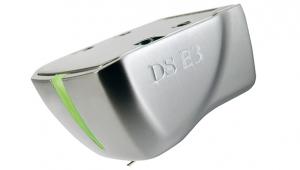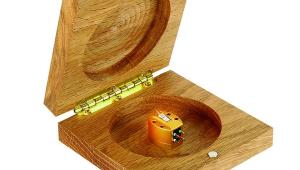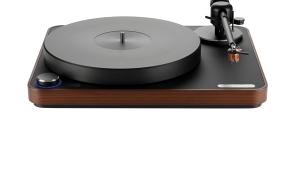Roksan Attessa Turntable Package

 Launched as part of a series including a CD transport and two amplifiers – one with onboard streaming – the Attessa turntable completes Roksan's most stylish offering
Launched as part of a series including a CD transport and two amplifiers – one with onboard streaming – the Attessa turntable completes Roksan's most stylish offering
There are a few announcements guaranteed to make an audio fan sit up and take notice, one being the unveiling of a new turntable from Roksan. After all, the company burst onto the scene in 1985 with the Xerxes – a deck that is still going strong 36 years later in '20 Plus' guise [HFN Dec '11]. However, the new deck in question is the £995 Attessa turntable, and it forms part of a completely new Roksan range.
The Attessa models also mark a new entry-level point for Roskan, sitting below the blak, Caspian and K3 components. They also continue the brand's styling evolution – the rather 'industrial' appearance of its oldest separates disrupted by the arrival of the Oxygene models [HFN Aug '13] before its new owners, none other than Monitor Audio, extended the range and appeal of the Roksan marque. The new Attessa models are its sleekest yet!
Float On
As well as the turntable here, there are currently two amplifiers – the £995 Attessa Integrated Amplifier and the £1495 Attessa Streaming Amplifier – plus the £495 Attessa CD transport. Strangely, the amps and CD player are offered in a silver or black finish, but the turntable's options are satin white or satin black, which strikes me as a stumbling block to stylistic harmony.
Fortunately, there are no such concerns under the skin. Fully developed and assembled in the UK, the Attessa turntable is based around a single-layer plinth sitting on three isolating but non-adjustable feet. A stable and level siting surface will be a prerequisite for this deck as it's also fitted with a 'floating' uni-pivot arm…
Meanwhile, the striking orange sub-platter contains an integral stainless steel spindle that locates into the brass bearing housing on the main plinth, and spins on a captive steel ball. Drive is transferred by a flat cross-section belt from an aluminium pulley atop a 24-pole synchronous AC motor. With a nod to cost and also to maintain steady belt tension, rather than use Roksan's traditional spring mounting, the motor here is secured into the plinth with a vibration-dampening gasket.

Meanwhile, the motor is driven via a two-speed synthesised supply within the plinth – one for 33rpm and one for 45rpm – and the deck is operated and speed-switched by three rather delicate touch buttons. The platter is a 10mm-thick tempered glass disc with spun and anodised aluminium edging, and weighs in at just less than 2kg. A Roksan R-MAT turntable mat tops it off. As for the partnering arm, the company has stuck with the uni-pivot bearing configuration found on its other current tonearms – the Nima and Sara.
Phono Inside
On the Attessa turntable, this means a stainless steel uni-pivot on a single jewel bearing and an arm wand comprising a flat construction of lightweight ABS topped with aluminium. As noted in PM's lab report, this does confer a higher than average effective arm mass, so cartridge choice needs to be carefully considered. Otherwise, the arm felt solid and was very stable in use, thanks largely to its separate azimuth balance and tracking force counterweights.
As part of this plug-and-go package, the deck is supplied with a pre-fitted and aligned Roksan Dana MM cartridge. This has a nominal 3.5mV output and a stylus tip described as 'diamond titanium' – if I was a gambling man, I'd wager pick-up specialist Audio-Technica is the source!
By way of final flourish, the Attessa turntable also has an inbuilt phono stage, well disguised with only a preposterously tiny slide switch to activate or bypass it, which you will find on the rear of the deck. This is dedicated to MM only, and offers no adjustable loading or gain options.
Setup of the deck is simple and straightforward and the quick-start guide clear enough, with the full manual available online, plus video tutorials to assist. For the purposes of this review, I parked the deck on the damped glass shelf of an Atacama Equinox RS rack, and hooked it up to a Naim SuperNait 2 amplifier [HFN Dec '13] driving a pair of PMC Twenty5.24 loudspeakers [HFN May '17].
![]() Sweet Escape
Sweet Escape
With the deck in 'active' mode and the inbuilt phono stage enabled, a couple of issues came swiftly to light. First, the Attessa proved more than a little microphonic in my setting, and handling the arm could result in thumps through the loudspeakers, so take care with volume!
























































